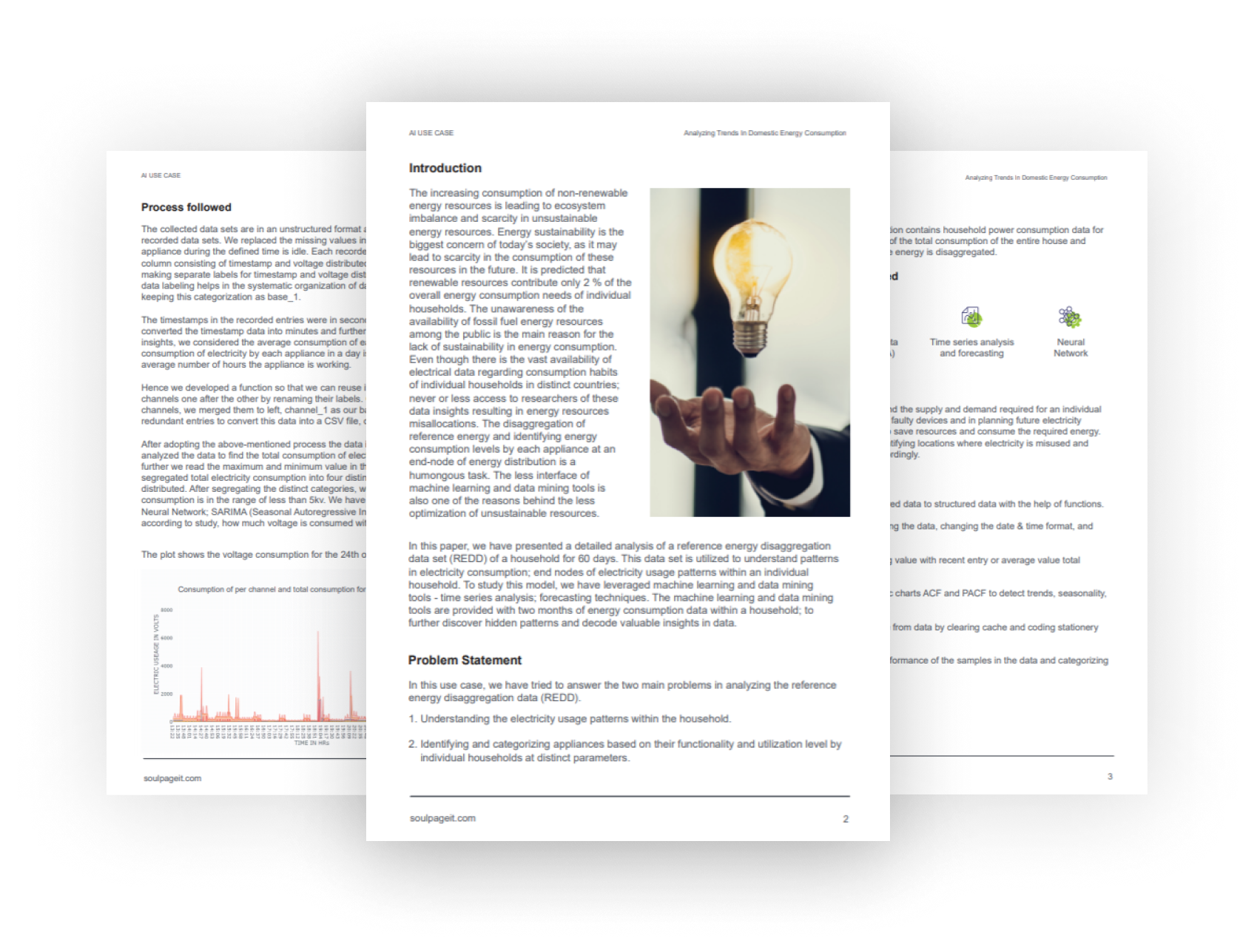Data Science Use Case in Energy
Analyzing Trends In Domestic Energy Consumption
Analyzing Trends In Domestic Energy Consumption
According to the research it is predicted that renewable resources contribute only 2 % of the overall energy consumption needs of individual households. Even though there is the vast availability of electrical data regarding consumption habits of individual households in distinct countries; never or less access to researchers of these data insights resulting in energy resources misallocations. The disaggregation of reference energy and identifying energy consumption levels by each appliance at an end-node of energy distribution is a humongous task. The less interface of machine learning and data mining tools is also one reason behind the less optimization of unsustainable resources.
In this paper, we have presented a detailed analysis of a reference energy disaggregation data set (REDD) of a household for 60 days. This data set is utilized to understand patterns in electricity consumption; end nodes of electricity usage patterns within an individual household. To study this model, we have leveraged machine learning and data mining tools – time series analysis; forecasting techniques. The machine learning and data mining tools are provided with two months of energy consumption data within a household; to further discover hidden patterns and decode valuable insights in data.

Objective
In this use case, we have tried to answer the two major problems in analyzing the reference energy disaggregation data (REDD).
- 1. Understanding the electricity usage patterns within the household.
- 2. Identifying and categorizing appliances based on their functionality and utilization level by individual households at distinct parameters.
Accomplishment
Through this analysis, we identified the supply and demand required for an individual house. And It further helped us in identifying faulty devices and in planning future electricity distribution patterns. This is beneficial to save resources and consume the required energy. On a large scale, it helps nations in identifying locations where electricity is misused and build strategies to use resources accordingly.
Technologies
We have leveraged technologies like:
- 1. Exploratory Data Analysis (EDA).
- 2. Time series analysis and forecasting techniques (Seasonal Autoregressive Integrated Moving Average (SARIMA), and long short term memory ( LSTM)).
- 3. Neural Network (artificial recurrent neural networks (RNN)).
Results
After using both the methods LSTM and SARIMA for forecasting and performing time series analysis, we found LSTM had more accurate results in predicting the total average consumption for a 60 days time period within a household.
Why Choose Us as Your Data Science Partner ?
- A dedicated team of expert data scientists with deep authority over AI, Machine learning and NLP, etc.
- Measurable results-driven approach.
- End-to-end services from strategy consulting to software development.
- Complete adherence to data regulations like HIPAA, Data protection 2018, etc.